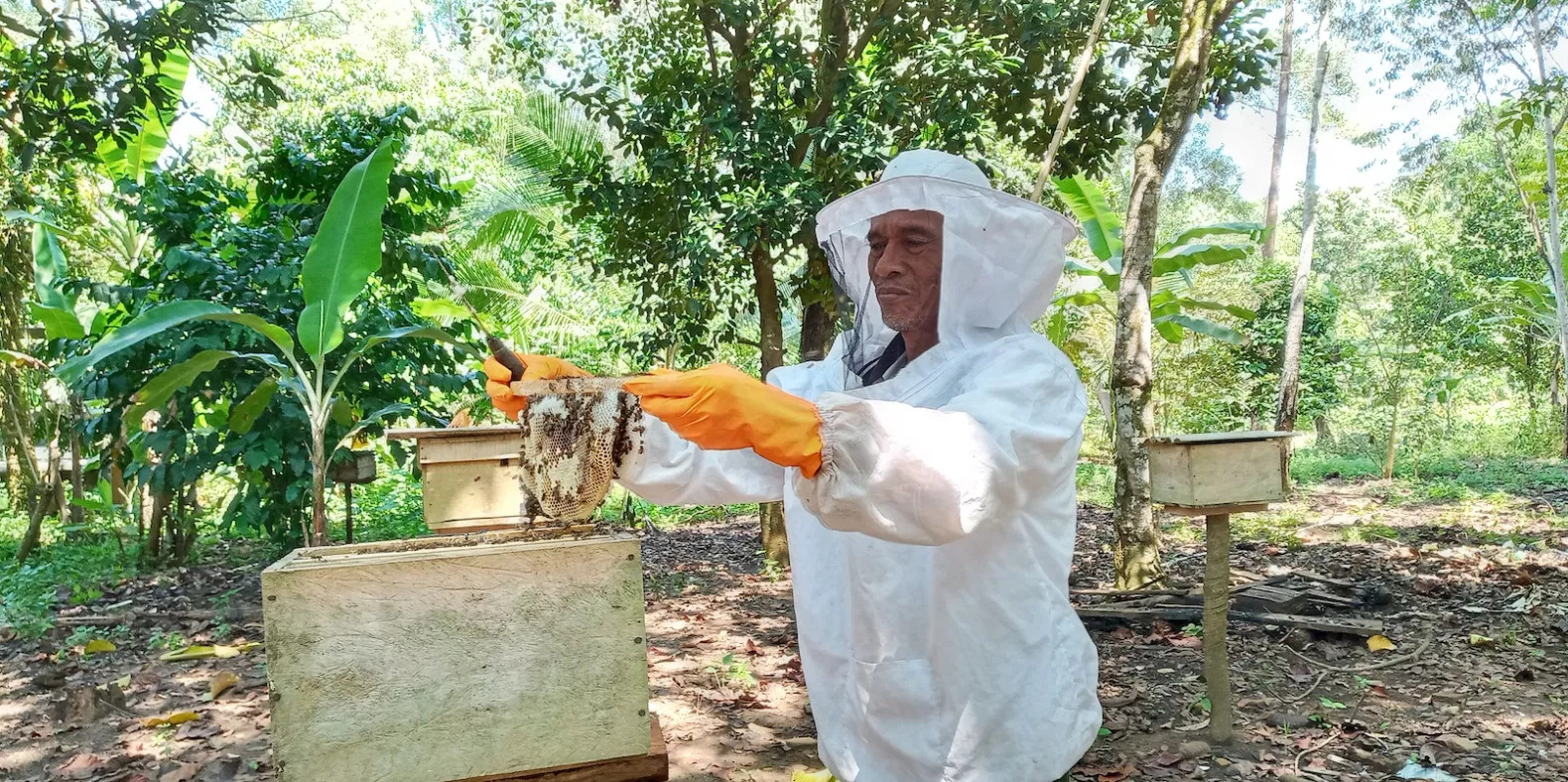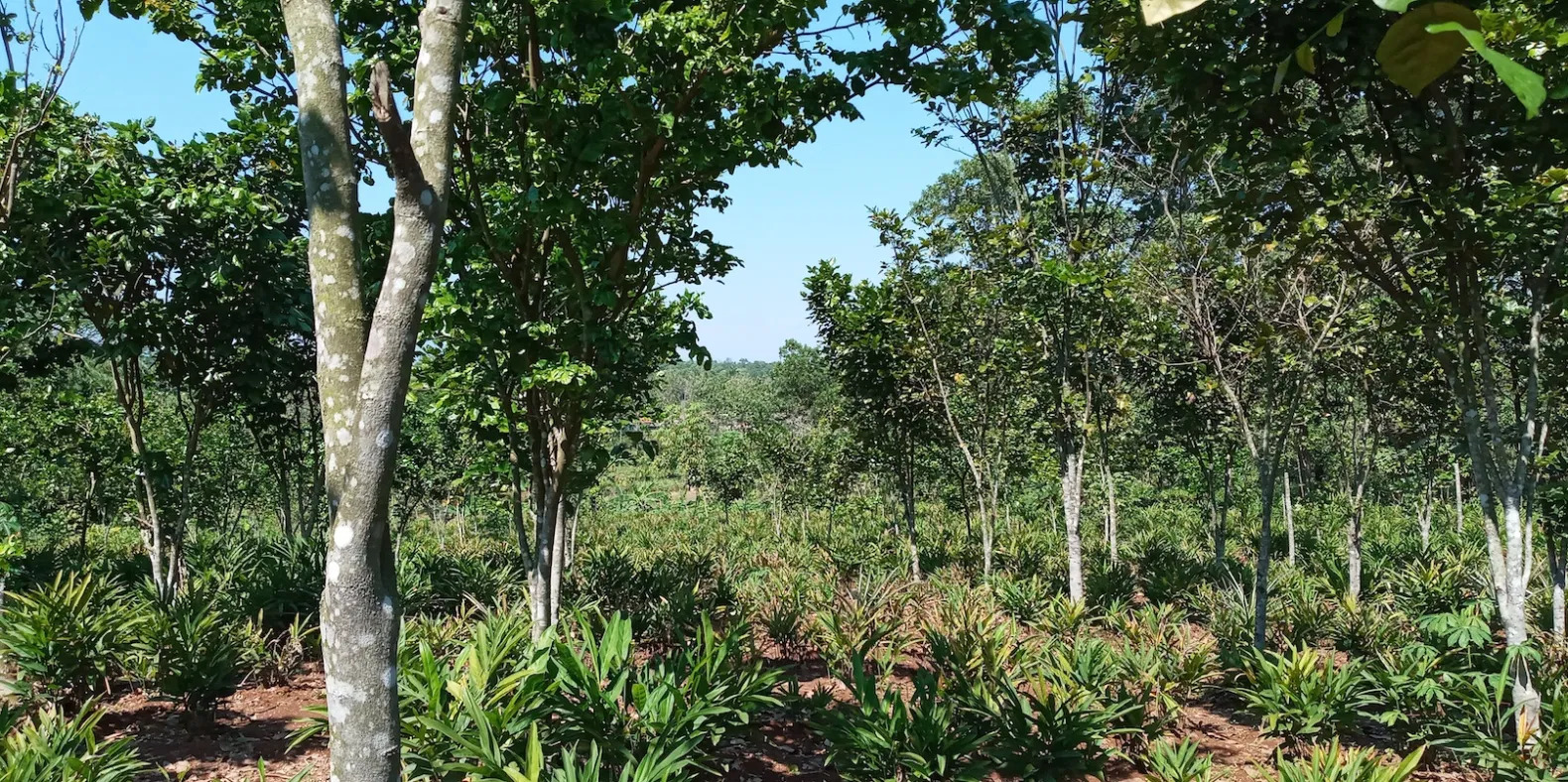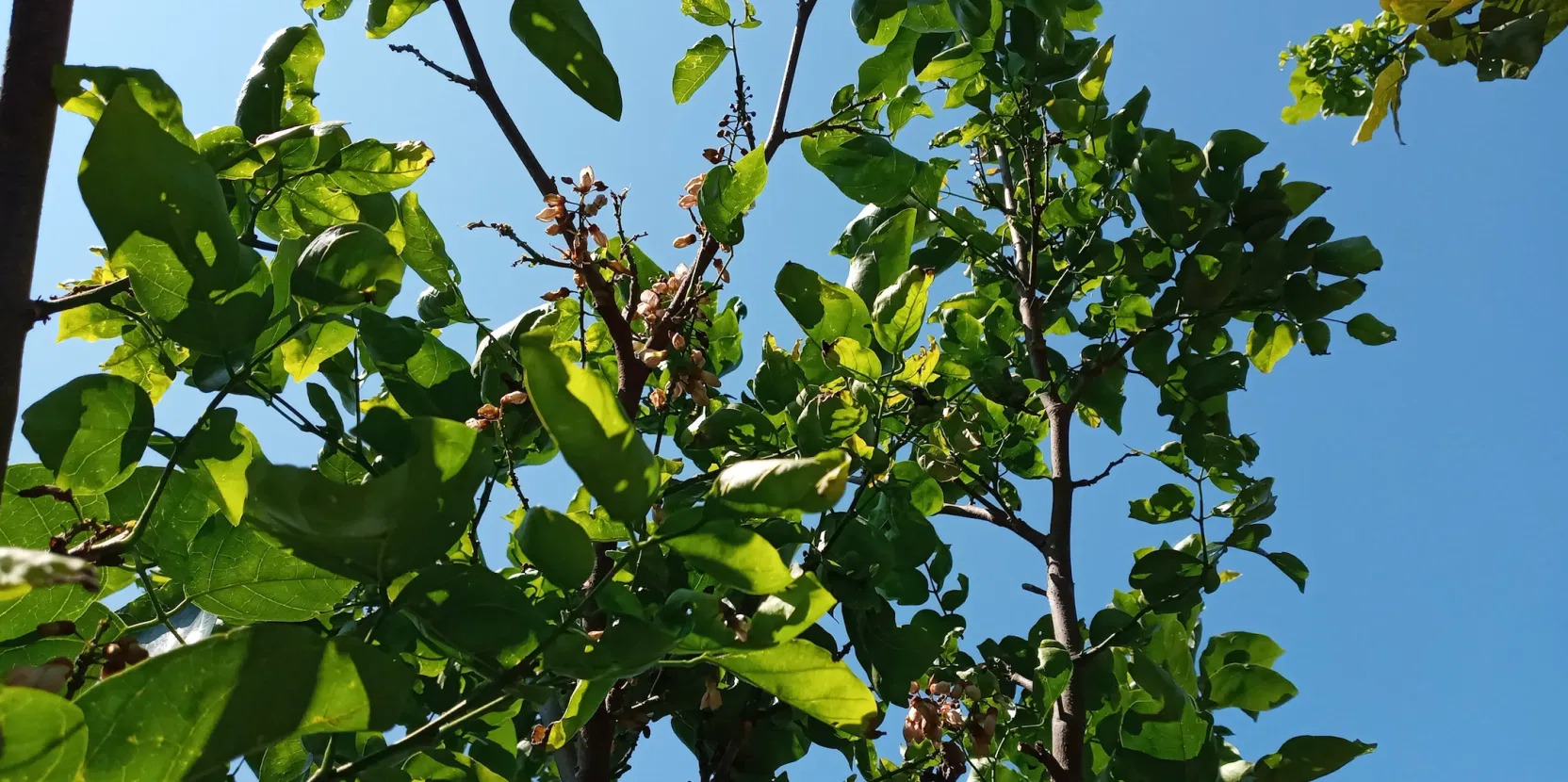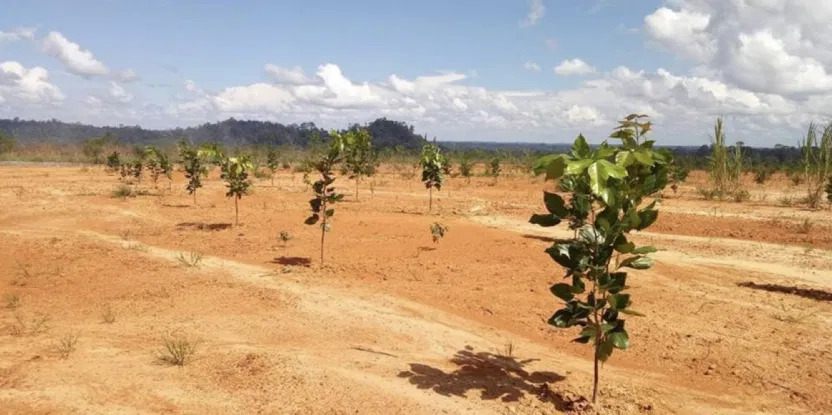- Sustainable Planet -
- 6mins -
- 495 views
Discover how this single tree has the potential to restore equilibrium between people and planet
Researchers are exploring the fast-growing Pongamia pinnata’s potential to restore degraded land, create a biofuel revolution, power cars, and even feed families.
Prolific Pongamia: Potential to restore equilibrium between people and planet
Indonesia’s Ministry of Forests and Environment through its Nationally Determined Contributions under UNFCC has set an ambitious target to restore 14 million ha of degraded land by 2030 with 90% survival rate. This requires choice of right tree species in right landscape for the right purpose. The leguminous tree pongamia (Pongamia pinnata syn. Milettia pinnata) could be utilised to restore the degraded land while providing multiple benefits.
Pongamia naturally grows across Indonesia, in Sumatra, Java, Bali, West Nusa Tenggara and Maluku. It grows to a height of 15–20 m and can grow in a range of environmental conditions including marginal lands. Its seeds can generate up to 40% crude oil by weight. Pongamia also provides, food, wood, fodder, medicine, fertiliser and biofuels. Therefore, as a multipurpose species, pongamia holds great potential to combat Indonesia’s energy crisis and to restore much of the degraded land. — CIFOR

Fast-growing tree offers versatility across sectors
Its native stomping-ground stretches across a broad swathe of Asia and the Pacific – from India in the west to Fiji in the east – and it is known by scores of local names, including Indian Beech, pongam, Karum tree, kranji and malapari, among many others.
Pongamia pinnata is a fast-growing, wide-canopied leguminous tree and a member of the pea family, which grows to about 15 to 20 meters (50 to 65 feet) in height and is traditionally used for fuelwood, animal fodder, shade and soil enrichment.
Its reddish-brown seeds, which grow in deep-brown pods, yield an orange-tinged oil when pressed, which has been used for centuries in processes such as leather tanning and soap-making; as a lubricant; and medicinally as a method to treat skin and liver diseases.
Now, with support from Republic of Korea’s National Institute of Forest Science (NIFoS), scientists at the Center for International Forestry Research (CIFOR) and Indonesia’s Ministry of Forestry and Environment’s Research and Development Agency (FORDIA) are exploring the tree’s potential to address pressing modern-day issues across the Indonesian archipelago: landscape restoration, bioenergy and sustainable livelihoods.

pongamia can thrive on marginal lands and will not compete with food production
Indonesia’s energy needs are increasing – and are currently served primarily through petroleum. The country has switched from net petroleum-exporting to petroleum-importing in recent years; given current consumption patterns, by 2030 its natural reserves will be depleted and unable to support demand.
To address this issue, the government’s national energy policy supports new and renewable energy sources such as bioenergy, and aspires for these to fulfill up to 23% of national energy needs by 2025, and 31% by 2050. However, many potential bioenergy crops – such as palm oil, corn and soya – have been stymied by their reliance on fertile land, which could otherwise be used to grow food.
“Despite these concerns, pongamia can thrive on marginal lands and will not compete with food production,” said Himlal Baral, a senior scientist in the Forests and Environment program at CIFOR.
“It’s a win-win solution for people and planet – growing pongamia on degraded and underutilized land is certainly a better land use strategy, considering its potential to enhance soil fertility, improve farm production and income, biodiversity, while supporting climate and sustainable development goals,” Baral said.
Yet debate continues to rumble as the country also sets about restoring 14 million ha of degraded land, which includes 2 million ha of degraded peatlands and 12 million ha of other biomes, as part of its emission-mitigating Nationally-Determined Contributions (NDCs) to the U.N. Paris Agreement on Climate Change, the question of which species to plant where is a hot topic.
Quick-growing trees that thrive in degraded, infertile land, and offer multiple benefits across numerous timescales, may prove particularly popular – if the figures stack up.

A win for energy, environment, communities . . . and diets?
Foresters across the globe have learned from experience that focussing solely on the restoration potential of a particular species can be deleterious in the long run. Without tangible and timely benefits for local communities and smallholder farmers, there is little incentive for these critical stakeholders to plant the trees, care for them as they grow, and decide to leave them standing rather than clear them for other forms of agriculture and development.
“So we have to find forestry systems that have clear benefits to the people who live in these places – and that they can manage themselves, too,” said Jino Kwon, a senior researcher at NIFoS in the South Korean Forest Service, who was seconded to CIFOR to enhance the collaboration between NIFoS, CIFOR, FORDIA and Indonesian forestry research institutions.
That need for the right tree in the right place for the right purpose with tangible economic benefits is one reason why pongamia has piqued the interest of scientists with CIFOR and Indonesia’s Ministry of Forestry and Environment’s Research and Development Agency (FORDIA) .
The species is one of the fastest-growing native trees in the Indonesian archipelago, it is found in a wide range of environments, from sea-level to around 1,200 meters in altitude; it thrives in degraded soils, and improves them by fixing nitrogen; and the oil it yields shows promise as a sustainable source of bio-energy – as well as a potential food product.

scientists have also been exploring another potentially valuable offering from pongamia itself: food
In a bid to understand how re-foresters and fuel producers might get the most bang for their buck, the scientists first assessed the oil content of pongamia trees from three provenances in Java.
“Now, we’re continuing the research to obtain the variation in oil content between individual trees,” said Budi Leksono, a professor at FORDIA, and lead author of an upcoming paper on the CIFOR team’s work in the area, “because it’s very, very different from tree to tree.”
They’re also trialling different extraction methods – some of which yield 15-20% more than traditional mechanical extraction processes. Another current project is a pongamia plantation in degraded peatlands and former mining land in Central Kalimantan.
“We planted the trees a year ago, and so far they are growing faster than other similar species,” said Leksono. “This suggests they may be particularly tolerant to harsh conditions, and would then be especially promising for restoration and rehabilitation of degraded land.”
This year, the team will begin trialling plantations in Bali’s dry, high-altitude Mount Batur region, as well as in the islands Nusa Tenggara, to observe how the species fares in different climactic and environmental conditions.
They’re also working out which other plants could be grown symbiotically within pongamia plantations such as coffee, to further supplement local communities’ food and livelihood security. “We need to work out where the Pongamia roots extend, and test whether these other species will help or compete with them,” said Kwon.
The scientists have also been exploring another potentially valuable offering from pongamia itself: food. Traditionally, people have steered away from eating the seeds or oil, because of their bitter taste, pungent smell and low-level toxicity. However, when the seeds are pre-treated and processed, they yield a tasty, high-nutrition flour that can be used in a wide range of processed products. “I haven’t tried it myself yet,” admitted Leksono, “but in the trials, everyone said it was delicious!”
The researchers are hopeful that the range of benefits offered by the tree will encourage its use and protection in the longer term – and that its presence will help local communities to thrive in the meantime. “Our job is balancing nature and the human being together,” said Kwon; “it’s not about keeping people out of forests, but making sure there are good opportunities for them to co-exist within the ecosystem.”

Further information
For more information on this topic, please contact Himlal Baral at h.baral@cgiar.org.
This research forms part of the CGIAR Research Program on Forests, Trees and Agroforestry, which is supported by CGIAR Fund Donors.
This research was supported by the Korean National institute of Forest Science.
The above article written by Monica Evans for ForestNews.cifor, and licensed under Creative Commons Attribution-NonCommercial-ShareAlike 4.0 International (CC BY-NC-SA 4.0).


